
|
 |
Components
1. Collector
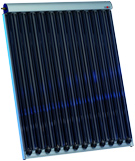 Evacuated tube collector 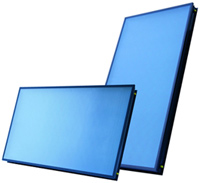 Flat plate collector The collector captures solar energy that is used to heat water. There are many different types, but the most common is the flat-plate collector. How does it work ? The absorber converts solar radiation into heat and transmits the energy to an antifreeze heat transfer fluid that circulates in the interior of the system. The system is especially insulated at the sides and at the back in order to minimise heat losses. The temperatures inside the absorber can exceed 200°C. 2. Storage tank
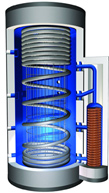 Proclean storage tank In the most cases, the storage tank is made of enamelled steel and is thermally insulated. There is a heat exchanger inside that is connected to the collector.
Normally, the capturing of solar radiation and the heating requirement do not coincide. Therefore it is necessary to install an element which stores the heat. In the domestic hot water storage tanks, water is saved for taking a shower, for cooking and washing. Downstream storage tanks are used for storing water which is then used for heating. Combination storage tanks are used for both applications. 3. Heat exchanger
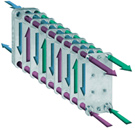 Plate heat exchanger Heat exchanger transmitts the heat between different ciruits: solar circuit-domestic hot water, solar circuit-heating and domestic hot water, solar circuit-pool. In the solar circuit, frost protection is used. The most common heat exchanger types are:
Submerged heat exchanger (serpentine heat exchanger, tube heat exchanger, spiral heat exchanger). Double-walled heat exchanger. 4. Auxiliary energy systems
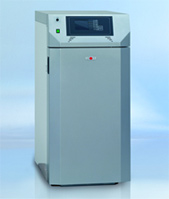 Boiler A system for providing auxiliary energy must be designed and calculated in such a way that it is able to cover the entire hot water requirements. Therefore, it should be seen as a conventional system for heating water.
When connected to a solar energy system, it must be optimised to get the maximum efficiency of both systems. In order to achieve this, the water must be heated in the solar storage tank first and then transferred to the auxiliary energy system before it is consumed. 5. Regulation and control devices
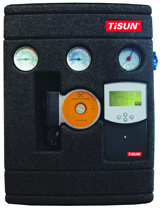 Solar station The solar stations and regulating devices completely control the solar energy system and the connection to the existing heating system. With the help of the integrated regulator it is easy to gain access to important information, such as the solar efficiency or the operating mode.
When designing the system, particular care needs to be taken to ensure the correct positioning of the sensors in order to detect the required temperatures - i. e. inside the sensor sleeves. An automatic control saves considerable amounts of energy and ensures maximum yields. |
SOLARTA - Avda. dels Pujols, 13 - Parc Empresarial d'Arta - E-07570 Artá/ Mallorca - Tel +34 971 835333 Fax +34 971 835404 - info@solarta.com
|